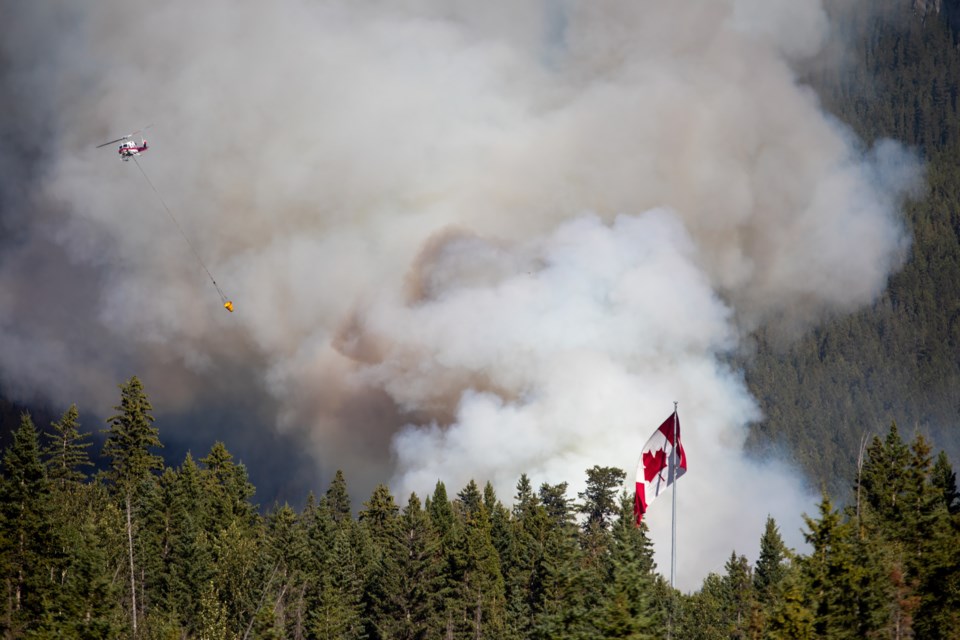KANANASKIS COUNTRY – Alberta Parks is preparing for a prescribed fire that will burn 8,000 hectares of the Ribbon Creek drainage, beginning in the fall.
The drainage is located in the Evan-Thomas Provincial Recreation Area, which has not had any major wildfires since 1936, according to the province. That’s almost 90 years of vegetation that’s been able to grow, decay, die, and accumulate – putting the area at a very high risk of severe wildfire.
“Since the last event, there’s been a heavy exclusion of wildfires, meaning everything’s been put out very quickly and there’s been no active prescribed fires in the area,” said Anastasia Drummond, wildfire information officer for the Calgary Forest Area.
“The risk there is that should a wildfire move through the area, there’s a lot of fuel that would make it difficult to contain. Given the resources and infrastructure in the Kananaskis Valley, it’s a very important spot for us to address now before we come to that kind of situation.”
The intended outcome of the controlled burn is to create a fire break that will safeguard nearby communities, resources, and infrastructure while also potentially preventing a wildfire from spreading down the valley. If a wildfire does break out in the area, the burned zone will serve as a strategic location from which firefighters can operate.
The prescribed fire will be completed in phases, with the first phase set to ignite 260 hectares west of the Ribbon Creek day use area and south of Nakiska Ski Resort in fall, when conditions are warmer and drier. The burn area is comprised of spruce, lodgepole pine and grassland meadows.
Since current conditions are favourable for establishing a fireguard for the initial phase, work is commencing on that to protect areas around the ski resort and any other nearby infrastructure.
Ideal conditions for guard establishment are in early- to mid-spring when the tops of the trees are snow free, but ample snow remains on the ground. The guard involves burning and cutting about 2.5 to three kilometres into the prescribed fire area, along an existing trail.
“All crews are actually doing right now is igniting the tops of trees, so they’re burning off needles and such,” said Drummond, adding the fireguard should be ready by May 1. “It’s pretty low-scale operations.”
Closures are in place for Ribbon Creek day use area, Ribbon Creek hiking and ski trails, Mine Meadow Trail, Centennial Ridge Trail and Hidden Trail, while crews establish the guard.
“We’re trying to stop access to where our crews will be actively burning. It should be short-term and we’re trying to minimize that impact so trails can be reopened,” said Drummond.
When the prescribed burn starts in the fall, closures of the same affected areas and others, will be in place. Alberta Parks will communicate closures and reopenings as they occur at albertaparks.ca/parks/kananaskis/evan-thomas-pra/advisories.
Apart from protective advantages, the controlled burn will also enhance wildlife habitat. The project is expected to benefit bighorn sheep, bears, ungulates, and other species.
“Having spoken with some of our wildlife experts, basically by clearing out some of that less-productive forest and making more open area, wildlife will be drawn there,” said Drummond.
The fire will create more improved habitat and room for new plants to establish, again drawing wildlife into the area and away from areas of high conflict with humans, like the ski resort, and at nearby lodges and trails.
Ignition of the 260 hectares around Ribbon Creek day use area will likely begin in fall and take about five to 10 days to burn, but Drummond said if appropriate conditions present earlier in the summer, fire managers may take advantage of the opportunity and start burning sooner.
Fire operations will involve a combination of ground and aerial ignition and will include other personnel, equipment and aircraft.
The second phase of the fire will likely focus on the southwest portion of the prescribed area, around Ribbon Lake and Ribbon Falls, but will not take place until at least 2024.
The Local Journalism Initiative is funded by the Government of Canada. The position covers Îyârhe (Stoney) Nakoda First Nation and Kananaskis Country.




